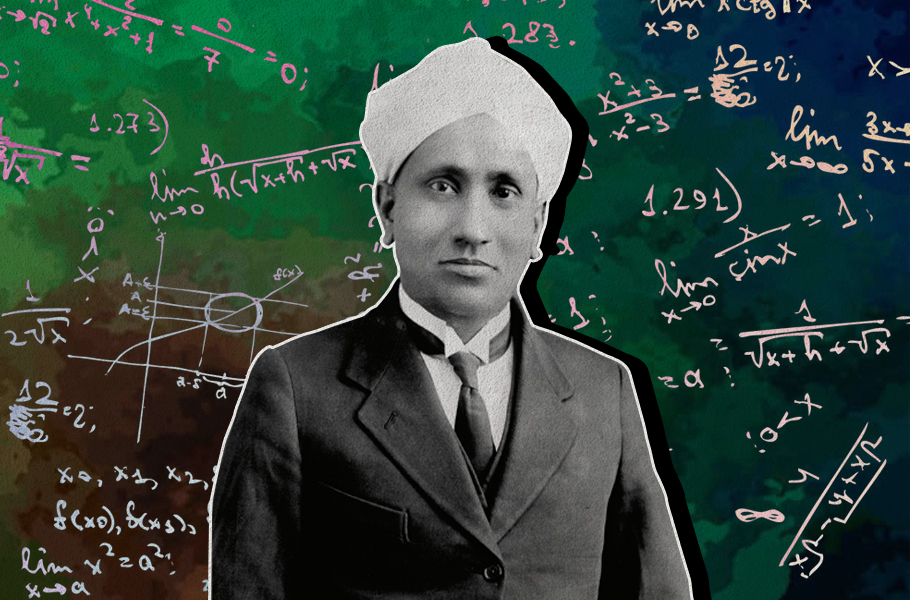
Remembering Raman: Physicist who demystified science, taught by example

“What I especially admire about you is that you have, as it were, pounded out of the soil such a large number of young talents,” Albert Einstein once spoke of German physicist Arnold Sommerfeld. The young talents that Einstein was referring to were the who’s who of European physics in the first half of the 20th century: Four of Sommerfeld’s doctoral students and three of his post-doctoral students won Nobel prizes.
What Sommerfeld was to Europe, Sir CV Raman was to India.
The 132nd birth anniversary of Raman was celebrated on November 7 and just ahead of his death anniversary on November 21, we remember the achievements of the Nobel laureate from Tamil Nadu’s Tiruchirapalli who gave world not only the Raman Effect, but also a legacy to remember.
Related news: Physics Nobel to Roger Penrose, Reinhard Genzel, Andrea Ghez
With a keen eye to spot talent, Raman mentored an entire generation of scientists: his protégés like KS Krishnan, KR Ramanathan, GN Ramachandran and Vikram Sarabhai were illustrious scientists who founded and nurtured prestigious scientific laboratories in a newly-independent India.
Born in November 1888, CV Raman was just 19 years old when he completed his post-graduation in Physics from the University of Madras. Like how Einstein and Srinivasa Ramanujan pursued non-scientific careers in their initial days, Raman was employed with the Indian Finance Service in Calcutta for a decade while he pursued scientific research on his own after office hours. This was serious, high quality research in addition to performing demonstrations and delivering lectures in popular science.
Decoding the magic of music
Between 1907 and 1917, when he accepted the offer from University of Calcutta to become a Professor of Physics, he published 27 research papers. Raman’s focus during this time was the study of the vibrations and sounds of stringed instruments such as the violin, the Indian veena and tambura, and Indian percussion instruments, the tabla and the mridangam. He drew interesting conclusions like how the design of the bridge in veena and tambura contributed to generating pleasing overtones (integer multiples of the fundamental frequency). He creatively assembled a mechanical violin player, a system of pulley, belt and electric motor “to imitate the technique of the violinist as closely as possible” and established that bowing pressure varies inversely as the square of the distance of the bow from the bridge and that bowing pressure’s maxima occurred at resonance frequencies of the instrument.
In a paper published in Nature in 1920, he explained that the heterogenous construction of membrane with varying density in the mridangam caused harmonic overtones.
Raman’s reputation had been firmly established in Europe by the time he visited Oxford in 1921 where his hosts were the Nobel laureates Sir JJ Thomson (who discovered electron) and Lord Rutherford (who discovered proton). Raman drew inspiration for his research from mundane observations. During his visit, he investigated the acoustical properties behind the whispering gallery in the Dome of St. Paul’s Cathedral. He followed it up with extensive research on dome structures in India and published corrections to Lord Rayleigh’s theory on curvilinear propagation of sound.
Raman is mostly remembered for the eponymous phenomenon that he won the Nobel Prize for in 1930: the Raman Effect. He showed that a miniscule quantity of photons in light lost energy due to molecular scattering, which resulted in higher wavelength of polarised light being emitted. By studying the emitted spectrum for the incident colours, a ‘fingerprint’ of the material could be obtained. The applications in chemistry were enormous as composition of chemicals could be identified without invasive procedures.
Raman remained an active researcher throughout his life, working on spectroscopy of a variety of materials and diffraction of light by sound waves, among other areas.
Showing the way
His contribution to research in India was as a mentor who set world-class standards of research for his students and peers. He founded the Indian Journal of Physics, the Indian Academy of Sciences and the Raman Research Institute; however he was not someone who could collaborate easily. He had run-ins bordering on personal feud with KS Krishnan, Max Born, Jawaharlal Nehru and the Council of IISc. He was not very encouraging of women researchers. However, warts and all, by inspiring a galaxy of superstars, Raman breathed life into scientific research in India.
Related news: Science and serendipity behind the new liquid magnet
An inspiring incident that Dr G Rajasekaran, former Joint Director of Institute of Mathematical Sciences, Chennai, narrates in his autobiography portrays the passion that Raman had for reaching out to students: “…in 1956, Raman lectured on his theory of specific heat … At one point his voice rose and he said ‘Debye’s theory is not worth the paper on which it is written’. So saying, he threw the sheaves of paper in his hand and they flew over our head and fell into the waste basket. We were all very much impressed…we felt this is how lectures must be given!”
Raman motivated not just his students but anyone who listened to him; and in the process he made Indian science richer.

